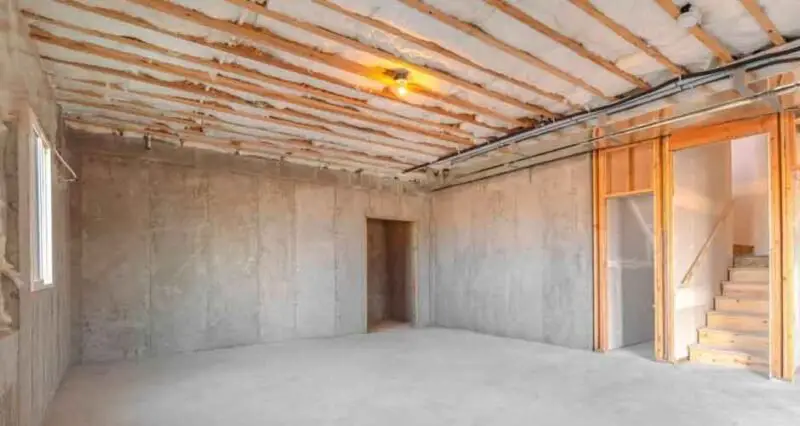
When it comes to dealing with an emergency in your home’s waterproofing, the right time to act is right now, but what about those more long-term actions? When is the best time to get around to those?
To some extent, the answer to that question will depend on where you are while you’re reading this. There are a number of factors which influence the right time for dealing with your basement’s waterproofing. Let’s look into them:
Understanding Basement Waterproofing
Before we can start looking into the matter of timing, it’s important to understand the aims and methods of waterproofing your basement.
At the most basic level, basement waterproofing is exactly what it sounds like- anything you do to try and ensure the wet stuff stays outside where it belongs. On a more detailed level, it might involve things like:
- Installing a French Drain or Sump Pump
- Using sealants and coatings on interior walls
- ‘Wrapping’ the exterior of your home in a semi-permeable membrane
Whatever methods you may opt to employ, the benefits are manifold.
From increasing the air quality in your home by avoiding mold, preventing water damage to the structure of the building or even just making your basement a pleasant, liveable space, keeping water out is an absolutely vital part of looking after your home.
Not only will your efforts make your home a more pleasant, safer place to live, if you ever consider moving on and selling up, a properly waterproofed basement is a great selling point and can command a better price and more interest.
Key Considerations For Timing Waterproofing Efforts
Now that we’ve got a basic grasp on what we’re doing, what are the elements to consider in deciding when to do them?
Climate And Weather Patterns
As you might expect, it’s much easier to deal with waterproofing issues when it’s dry. A period of dry weather will mean that sealants and paints dry more effectively and there’s less chance of moisture being trapped by your efforts, making your problems worse rather than better.
Of course, when you’re most likely to have a prolonged period of good weather will vary from location to location.
Temperature
Rain isn’t the only weather that you need to be concerned about when it comes to waterproofing your basement. The temperature is another vital consideration.
Attempting to dig out around your home during a prolonged period of freezing conditions will be much more work than doing it when the ground isn’t rock solid, but beyond that, many of the products you may use will have an ideal temperature range they require to set properly.
For products like waterproofing paint, you want the ambient temperature to be no less than 44o Fahrenheit to ensure the best results.
Ground Conditions
We’ve already touched on this, but the condition of the ground around your home makes a huge difference to how easy and effective your basement waterproofing efforts will be.
Frozen or particularly waterlogged soil will hamper your efforts. Not only will it be more work to dig out any excavations which might be required, lower temperatures and increased moisture will mean that paints and sealants may not cure properly and barriers may end up trapping moisture rather than blocking it.
Why Early Fall Is The Optimal Time For Waterproofing Your Basement
While you may get different answers from different people, we believe that early fall is the ideal time to tackle those waterproofing tasks for most people. There are a number of reasons for this:
Weather
Depending on where you are, summer is often both hot and wet. While warmer weather won’t hamper your efforts, constant summer storms will.
Early fall offers the best of both worlds- both fairly mild and relatively dry, the first few weeks of the autumnal season offer the best chance to carry out work without either freezing or waterlogged conditions.
Strategic Advantages
Not only does early fall allow for optimal conditions, it also gives you the advantage of getting things done before the big freeze of winter, with its greater levels of precipitation increases the risk of a waterproofing emergency.
The relatively dry weather also lessens the level of humidity in many regions, making those interior tasks more effective too as sealants and paints will cure more effectively without having to contend with so much moisture in the air.
Planning Your Basement Waterproofing Project In Early Fall
Getting your early fall waterproofing project going starts before the leaves begin their annual change of color. Towards the end of summer is the ideal time to start planning your efforts for autumn.
The first thing to do is identify any potential problems. The best way of doing this is to consult a professional waterproofing company. They will be able to highlight any potential issues you may face as the winter draws in and the weather turns nasty.
Ensuring that you deal with a properly qualified, trustworthy firm means that you can trust what they tell you and rely on their guarantees for any work which you may opt to employ them for. Make sure you check out reviews and ask around to ensure that the people you’re dealing with are right for the job.
While there are certainly things you can do yourself to help with the waterproofing efforts, in general, waterproofing a basement is best left to the pros. If nothing else, with the potential risks involved, it’s nice to be able to rely on someone else’s insurance.
So, while it might depend on exactly where the basement in need of waterproofing happens to sit, a good rule of thumb is that you want the weather to be relatively mild and dry to ensure the best results for the least effort.
For most of us, that means early fall is the ideal time to get started on ensuring the winter weather stays where it should- outside.

